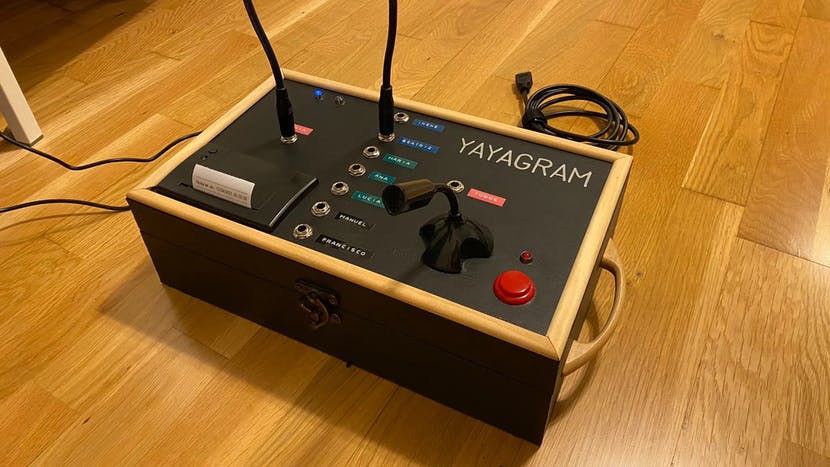
Manuel Lucio Dallo's Raspberry Pi-Powered Yayagram Turns Telegram Into a Physical Switchboard
from hackster.io
Engineer Manuel Lucio Dallo has built a device that brings virtual communications into the physical realm, as a means of making it easier for his grandmother to stay in touch over the popular Telegram app: The Yayagram.
"Why Yayagram? Well, 'Yaya' means 'Granny' in Castillean, a warm way to refer to your grandmother," Dallo, senior engineer at Plastic SCM, explains of his machine's name. "And, I use Telegram to send and receive messages, so merge both words and you have the Yayagram! The Yayagram has two features: Send voice messages via Telegram by just pressing a button; receive Telegram messages and physically print them on thermal paper."
The idea behind the Yayagram is to take what can be, to those not used to it, an unintuitive software interface and implement it in hardware. Inspired by the physical switchboards of early telephone systems the user physical plugs a cable into one of a series of jacks, each labelled with a grandchild's name, then holds down a button to record a voice message. Once the button is released, the message is automatically sent to the selected recipient via Telegram.
The Yayagram is bidirectional, too. With no screen, incoming text messages are printed on a small thermal printer — the inspiration this time, Dallo explains, coming via the traditional telegrams from which Telegram gets its name. The only other display: Three status LEDs, showing the Yayagram is receiving power, has a connection to Telegram, and is actively recording while the button is held.
Engineer Manuel Lucio Dallo has built a device that brings virtual communications into the physical realm, as a means of making it easier for his grandmother to stay in touch over the popular Telegram app: The Yayagram.
"Why Yayagram? Well, 'Yaya' means 'Granny' in Castillean, a warm way to refer to your grandmother," Dallo, senior engineer at Plastic SCM, explains of his machine's name. "And, I use Telegram to send and receive messages, so merge both words and you have the Yayagram! The Yayagram has two features: Send voice messages via Telegram by just pressing a button; receive Telegram messages and physically print them on thermal paper."
The idea behind the Yayagram is to take what can be, to those not used to it, an unintuitive software interface and implement it in hardware. Inspired by the physical switchboards of early telephone systems the user physical plugs a cable into one of a series of jacks, each labelled with a grandchild's name, then holds down a button to record a voice message. Once the button is released, the message is automatically sent to the selected recipient via Telegram.
The Yayagram is bidirectional, too. With no screen, incoming text messages are printed on a small thermal printer — the inspiration this time, Dallo explains, coming via the traditional telegrams from which Telegram gets its name. The only other display: Three status LEDs, showing the Yayagram is receiving power, has a connection to Telegram, and is actively recording while the button is held.
"A Raspberry Pi 4 is the brain of the project," Dallo reveals. "Everything runs on Python and I use several third-party libraries to complete it. The rest is all analog, jack connectors, LEDs, cables, a printer, a mic, and a button. The Python code uses three threads, one to receive messages, another to send messages, and the last one to monitor the Yayagram status that is later shown using the status LED."
More details on the project can be found on Dallo's Twitter thread, though the source code has yet been publicly released; the third-party telegram-cli software which drives the project, however, can be found on GitHub under the the GNU General Public License 2.0.




Leave a comment